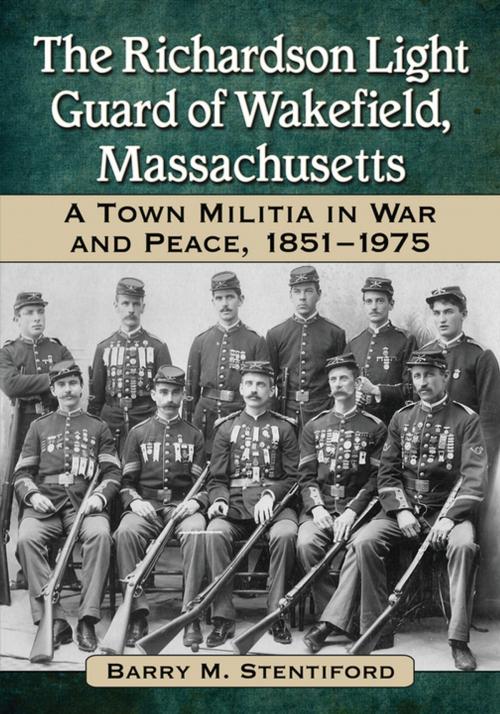The Richardson Light Guard of Wakefield, Massachusetts
A Town Militia in War and Peace, 1851-1975
Nonfiction, History, Military| Author: | Barry M. Stentiford | ISBN: | 9781476602851 |
| Publisher: | McFarland & Company, Inc., Publishers | Publication: | April 26, 2013 |
| Imprint: | Language: | English |
| Author: | Barry M. Stentiford |
| ISBN: | 9781476602851 |
| Publisher: | McFarland & Company, Inc., Publishers |
| Publication: | April 26, 2013 |
| Imprint: | |
| Language: | English |
This book traces the history of the Richardson Light Guard of Wakefield, Massachusetts, from its origins in 1851 until its end in 1975. What had been an institution of community members and local elites passed to town, then state, and finally federal government. During the same period, Wakefield evolved from an agrarian town to a manufacturing town and finally to a bedroom suburb, ending the practice of a handful of local elites ruling the town unchallenged. Though the rise of the National Guard was generally positive, for some militia companies, inclusion in the National Guard weakened vital bonds with their communities. In the 19th century, the Richardson Light Guard thrived under generous patrons, a supportive town, and a relatively wealthy state government. After becoming part of the National Guard in 1916, the links with its home community steadily weakened, finally breaking during World War II. After the war, the National Guard company had few links to Wakefield and was reorganized out of existence in 1975.
This book traces the history of the Richardson Light Guard of Wakefield, Massachusetts, from its origins in 1851 until its end in 1975. What had been an institution of community members and local elites passed to town, then state, and finally federal government. During the same period, Wakefield evolved from an agrarian town to a manufacturing town and finally to a bedroom suburb, ending the practice of a handful of local elites ruling the town unchallenged. Though the rise of the National Guard was generally positive, for some militia companies, inclusion in the National Guard weakened vital bonds with their communities. In the 19th century, the Richardson Light Guard thrived under generous patrons, a supportive town, and a relatively wealthy state government. After becoming part of the National Guard in 1916, the links with its home community steadily weakened, finally breaking during World War II. After the war, the National Guard company had few links to Wakefield and was reorganized out of existence in 1975.















